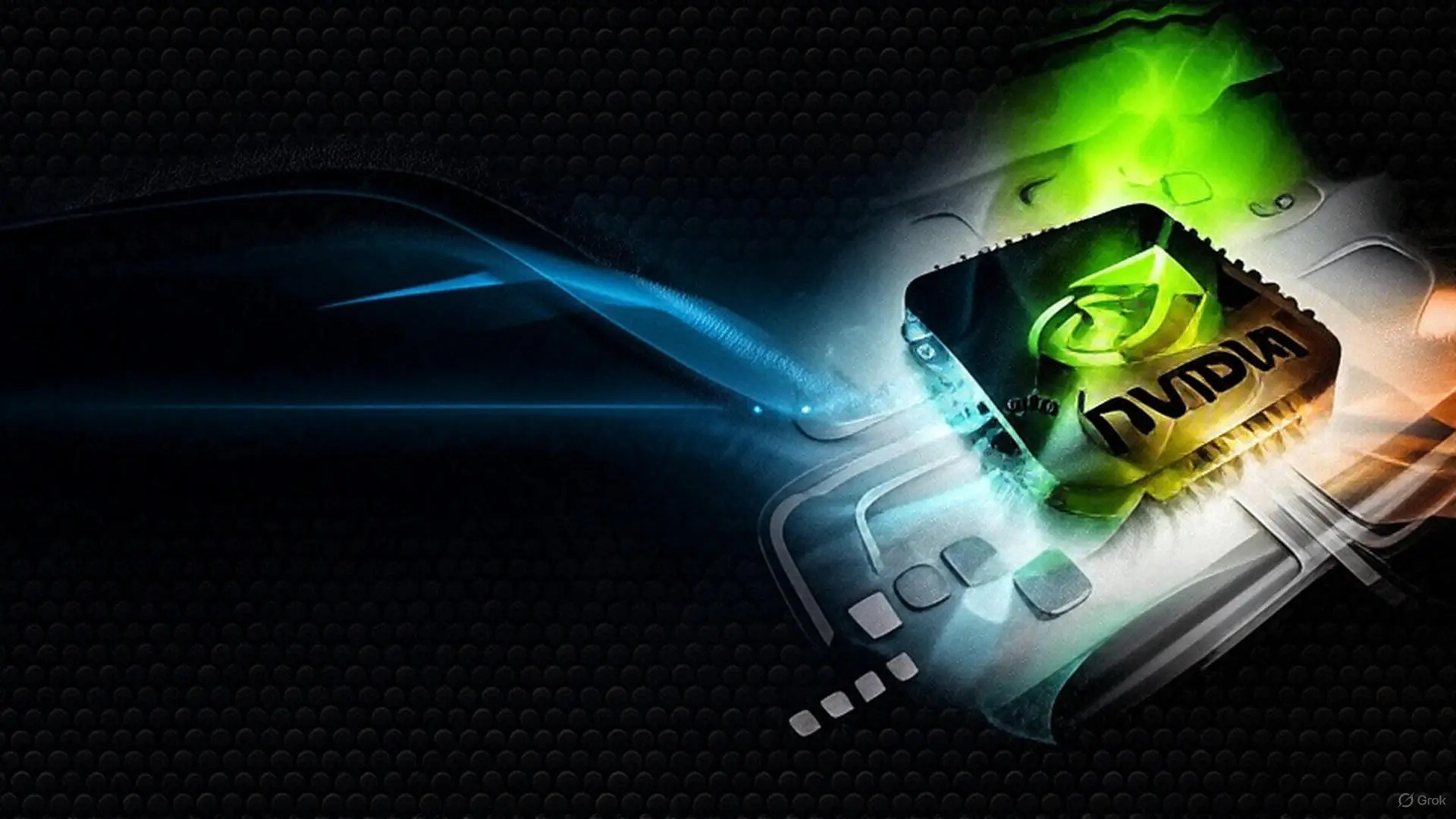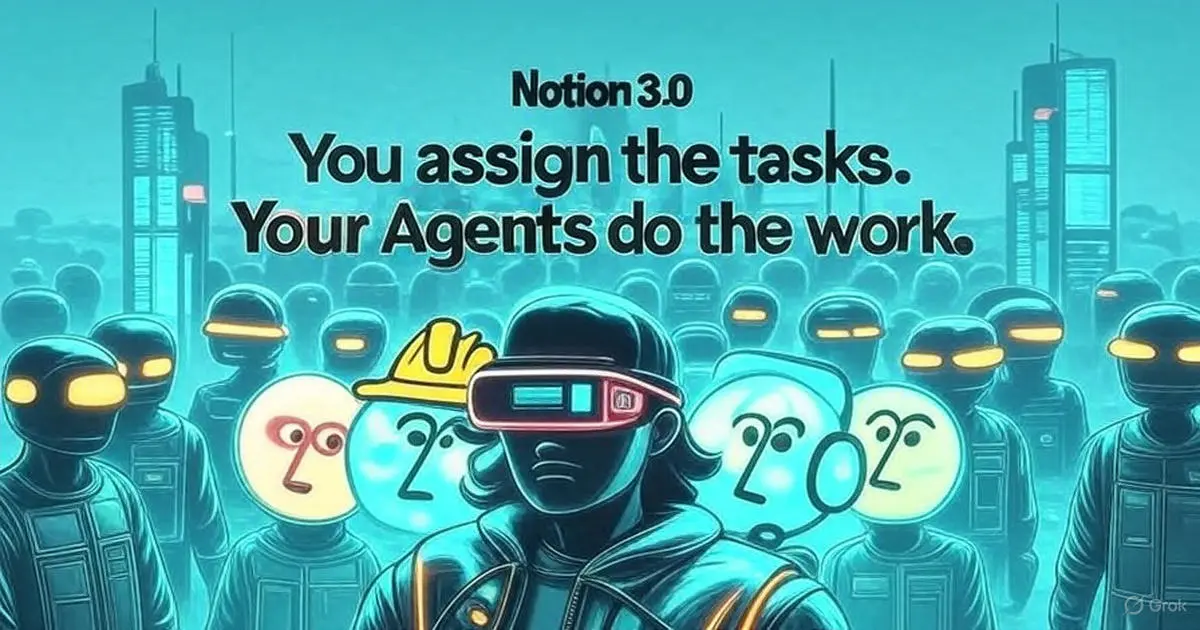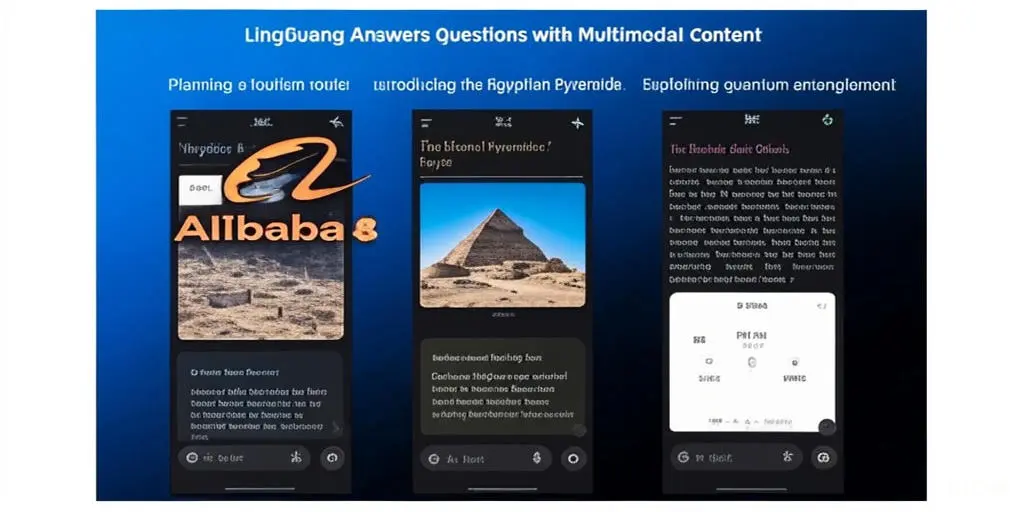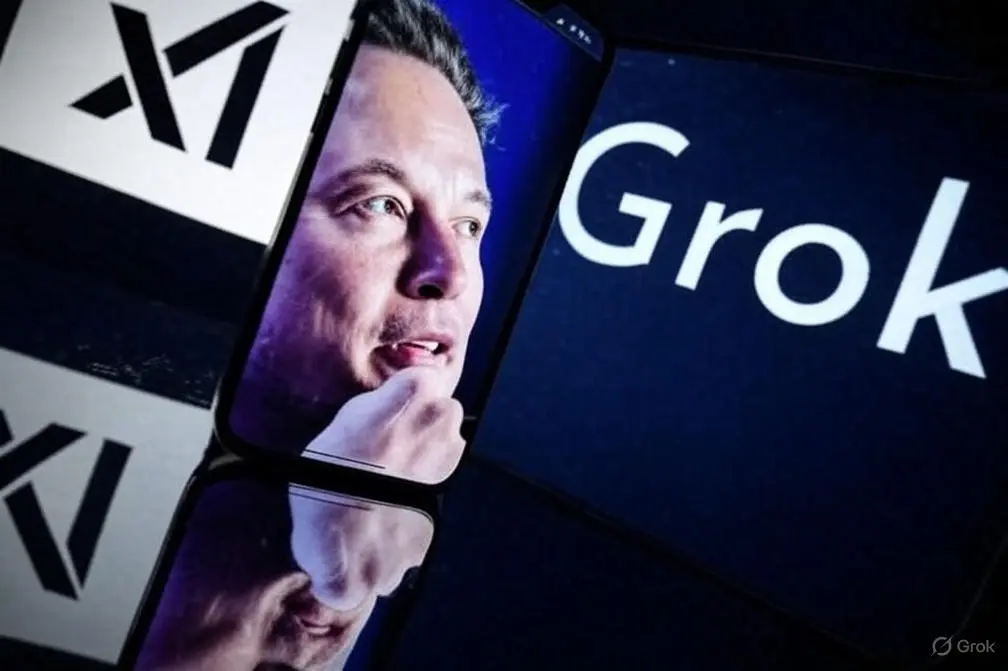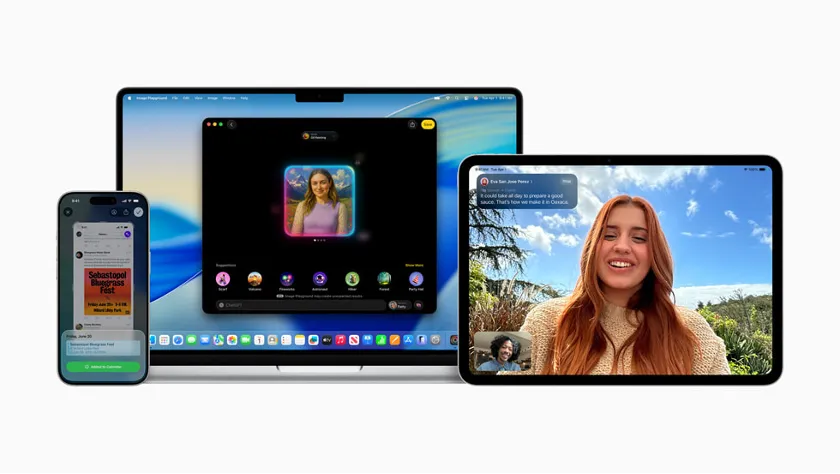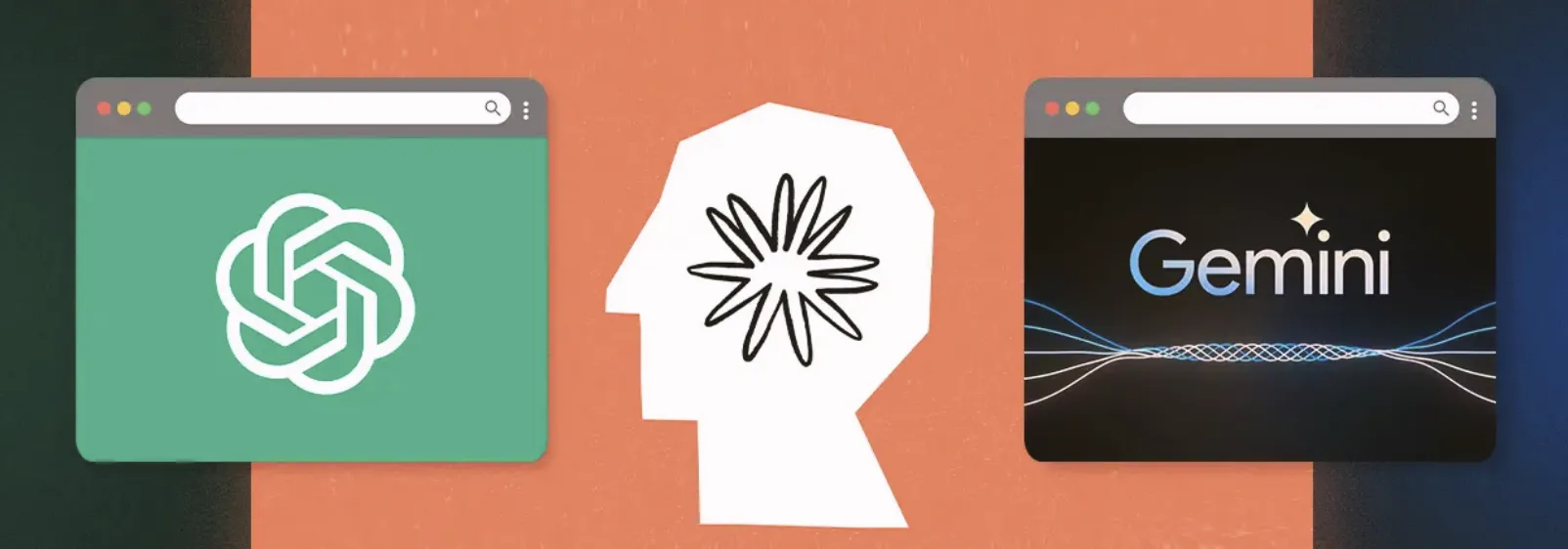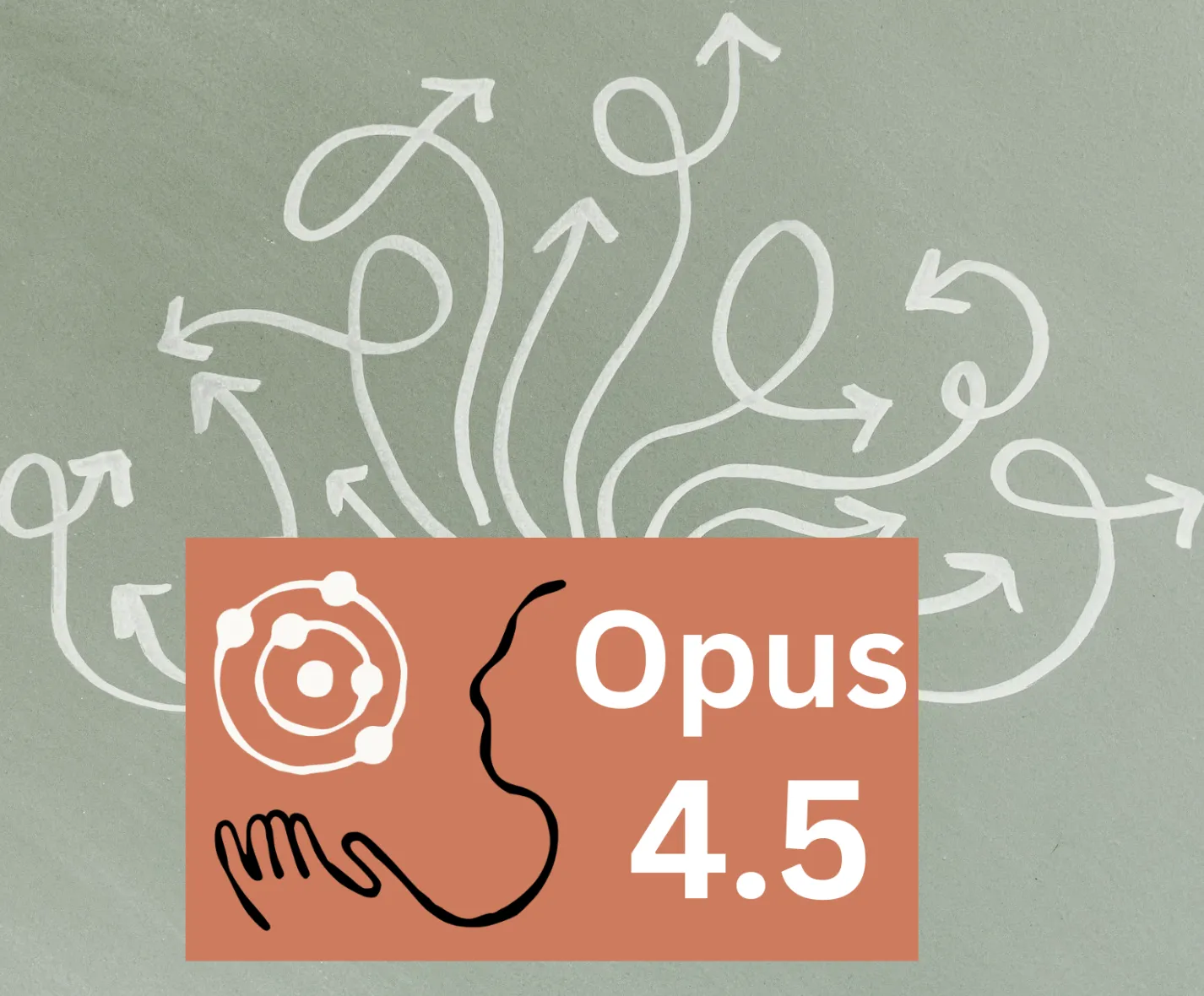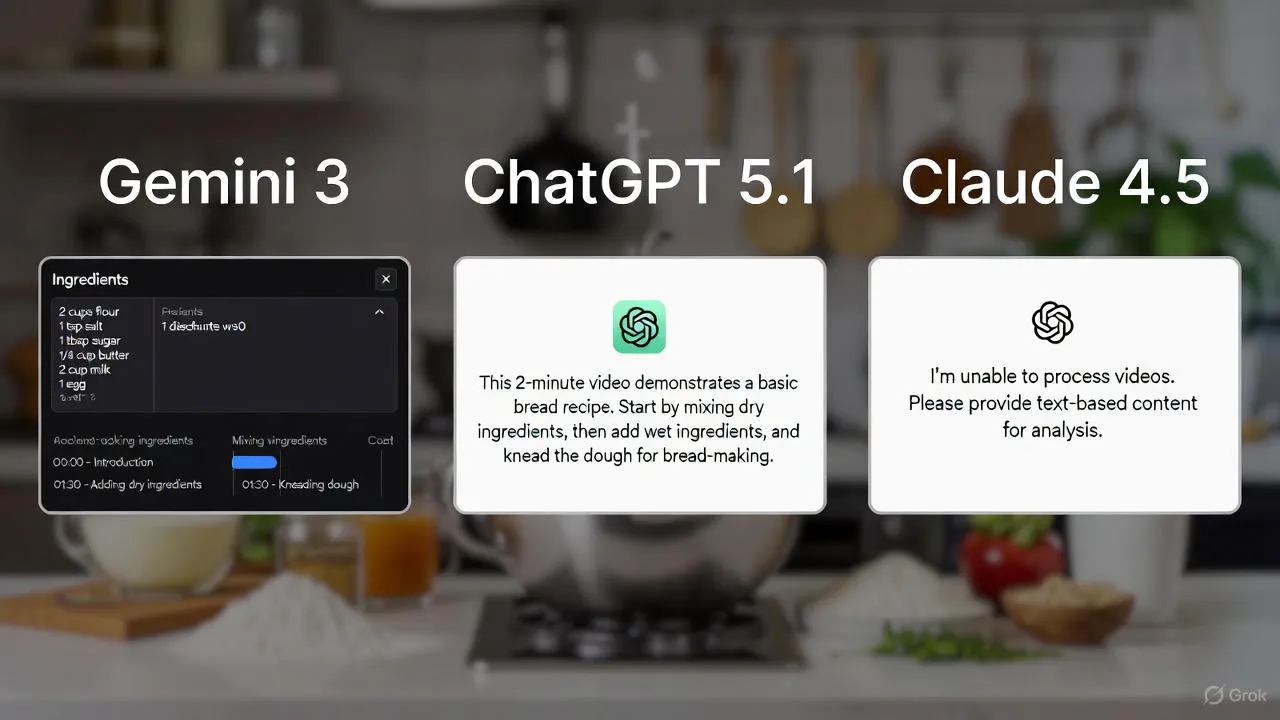Kimi K2: Open-Source LLM Rivals ChatGPT-5.1 & Claude 4.5 in Reasoning

Author: Boxu Li
What is Kimi K2 Thinking?
Kimi K2 Thinking is Moonshot AI’s latest large language model (LLM) designed as a “thinking agent” that can reason step-by-step and call external tools autonomously. In essence, Kimi K2 is an open-source agentic reasoning model that pushes the boundaries of deep reasoning and long-horizon task execution. Released in late 2025, it boasts a massive 1 trillion parameter architecture yet runs efficiently by activating only 32 billion parameters per inference via Mixture-of-Experts (MoE) design[1]. This allows K2 to deliver top-tier performance on complex tasks without requiring impractical hardware. As an open model (released under a modified MIT license), Kimi K2 is freely available to the AI community – a notable contrast to proprietary systems like OpenAI’s GPT-5 series and Anthropic’s Claude.
Key Features and Innovations
- Deep Chain-of-Thought & Tool Use: Kimi K2 was trained to interleave chain-of-thought reasoning with dynamic tool calls. It can autonomously invoke search engines, calculators, code interpreters, and other APIs mid-thought. Impressively, it remains coherent over 200–300 sequential tool calls without human input[2][3]. Prior models would drift or forget goals after maybe 30-50 calls, so K2’s long-horizon focus is a breakthrough in tool-use agents. This enables complex workflows (researching, coding, writing) that span hundreds of steps while staying on track.
- Massive Context Window: With a 256,000-token context length[4][5], Kimi K2 can handle entire books or multi-hour transcripts as input. It dramatically outscales the context of most models today (for comparison, Claude 4.0 offered 100K tokens, and even new rivals like DeepSeek V4 and Google Gemini 3 are only now reaching 1M-token contexts[6][7]). This huge context lets K2 integrate knowledge across long documents or dialogues without needing to truncate or forget earlier information, enhancing its reasoning continuity.
- Trillion-Parameter MoE Efficiency: Under the hood, K2’s Mixture-of-Experts architecture uses 384 expert subnetworks but activates only a fraction per query[8]. It effectively functions like a 32B-parameter model per token (selecting 8 experts per token)[1], giving it the power of a trillion-parameter model with a fraction of the runtime cost. This sparse gating approach means more specialized “brains” handle different aspects of a task, improving multi-domain reasoning without demanding a supercomputer for every run. Trillion parameter models were once purely theoretical – Kimi K2 demonstrates an achievable design where extreme scale and practicality meet.
- INT4 Quantization for Speed: Uniquely, K2 was post-trained with Quantization-Aware Training to natively support 4-bit weights[9]. This INT4 quantization cuts memory and inference latency roughly in half with no loss in accuracy[10]. In practice, that means K2 can generate answers faster and on less GPU memory than similarly sized models. All its benchmark results were reported at INT4 precision[10], showcasing that efficiency doesn’t have to sacrifice performance. For developers, this lowers the barrier to using such a large model on modest hardware.
- Stable Long-Horizon Agency: Thanks to specialized reward modeling and training for consistency, K2 exhibits stable goal-directed behavior over very long sessions. It resists the typical drift or degradation that other agents show after many interactions. For example, early testers found it can preserve context and objectives even after 300 tool calls or a 4-hour continuous reasoning session[11][3]. This reliability in long tasks (like step-by-step problem solving or multi-stage coding projects) is a key differentiator.
Kimi K2 Architecture: MoE and the “Reasoning Graph”
Underneath, Kimi K2’s architecture combines a cutting-edge Transformer backbone with an MoE (Mixture-of-Experts) layer in almost every block. It has 61 layers with 384 experts in total, using 64 attention heads and the SwiGLU activation function[8]. Only 8 experts are active per token, guided by a gating network that routes each query to the most relevant “experts.” This design gives K2 a form of modular reasoning: different experts can specialize in subtasks (math, code, language, etc.), and the model dynamically assembles a “reasoning graph” of expert pathways as it processes input. In essence, each complex query traverses a graph of expert nodes, enabling more diverse and accurate reasoning than a monolithic model.
This idea aligns with emerging research representing chains of thought as graphs rather than linear paths, which can improve model understanding and robustness. K2’s training likely encouraged such branching-and-merging behavior in its chain-of-thought, yielding an implicit reasoning graph for each query. The result is an LLM that approaches problems flexibly, exploring multiple solution paths internally before converging on answers. This may contribute to its high scores on reasoning benchmarks. Despite the sophistication, K2 remains usable: testers report it runs at about 15 tokens/sec on a dual M3-Ultra setup (Apple’s SOC), and a full 1T model fits in ~600 GB of VRAM with compression[12][13]. For an open-source community model, that’s remarkably accessible given the scale.
Benchmark Performance: Kimi K2 vs. GPT-5.1, Claude 4.5, and DeepSeek
Moonshot’s Kimi K2 has been put to the test against the best models of 2025. On many AI benchmarks 2025, K2’s results are turning heads. It sets new state-of-the-art scores on several reasoning challenges, often surpassing its closed-source counterparts[2][14]. Below is a snapshot of key benchmark comparisons (higher = better performance):
Table: Kimi K2 Thinking vs. top models – On complex reasoning (HLE) and web research tasks, K2 leads the pack, even edging out GPT-5.1. It excels at agentic tool-augmented benchmarks like BrowseComp, vastly outperforming Claude 4.5 (which struggled with tool use)[15]. GPQA shows K2 matching GPT-5.1 on difficult Q&A, and on coding benchmarks (SWE-Bench), K2 is at the frontier for open models[11][20]. K2’s only category of modest performance is in certain knowledge-heavy tasks where GPT-5.1 or Claude still hold a slight edge[14] – for instance, GPT-5.1 scored a bit higher on some advanced language tasks, and Claude 4.5 reportedly retains an advantage on a few high-level creative writing evaluations. Nonetheless, Kimi K2 has narrowed the gap dramatically. It’s the closest an open model has ever come to the closed “frontier” models in overall capability[22].
Notably, Humanity’s Last Exam (HLE) – a brutal, comprehensive test spanning many domains – was a showcase for K2. With tools enabled, Kimi K2 scored 44.9%, beating out GPT-5.1’s 41.7%[18]. This is a big deal: HLE is essentially a Turing-test-like gauntlet of knowledge and reasoning, so an open model topping a flagship OpenAI model here is newsworthy. On BrowseComp, a challenging web research benchmark, K2 achieved 60.2% versus GPT-5.1’s 54.9%, while Claude 4.5 lagged far behind at 24%[15]. This underscores how tool-using “agent” models like Kimi K2 can dominate tasks that require active retrieval and multi-step reasoning. Anthropic’s Claude, even in its “Sonnet 4.5” reasoning mode, wasn’t optimized for such interactive tasks, whereas K2 was built for it.
It’s worth noting that not every score is a victory for K2. There are still areas (some general knowledge quizzes and creative tasks) where GPT-5.1 or Claude 4.5 come out on top[14]. For example, GPT-5.1 slightly leads on certain high-level academic benchmarks and Claude’s extensive fine-tuning helps on nuanced conversational quality at times. However, the gaps are small, and K2 often wins or ties within the margin. This represents a huge leap for open-source LLMs, considering that just a year ago the best open models were trailing far behind the likes of GPT-4.
Kimi K2 vs. GPT-5.1 Codex-Max
OpenAI’s GPT-5.1-Codex-Max is a specialized version of GPT-5.1 aimed at long-form coding and agentic tasks. It’s a closed model, but based on available info, GPT-5.1 uses a dense (fully-activated) architecture likely in the few-multiple hundreds of billions of parameters (OpenAI hasn’t disclosed exact size). In comparisons, Kimi K2 holds its own against GPT-5.1. On reasoning benchmarks like HLE, K2 actually slightly outscored GPT-5.1 with tools[18], and nearly matched its performance on complex QA (K2’s 85.7% vs GPT-5.1’s 84.5% on a hard QA set)[15]. GPT-5.1 still has a slight edge in some areas – for instance, GPT-5.1’s training on multi-step coding and math gives it near-perfect scores on certain math/code tests (OpenAI reported GPT-5.1 hits 99.6% on AIME math with tools, just above K2’s 99.1%[23]). But these differences are marginal.
One big contrast is context handling: Kimi K2 has a fixed 256K token window, whereas GPT-5.1 Codex-Max uses a “multi-context” strategy called compaction**. OpenAI’s model can** work across multiple context windows, effectively handling millions of tokens in a single extended task[21]. Rather than one gigantic window, it partitions and compacts context as needed. This gives GPT-5.1 a form of infinite workspace for, say, reading an entire codebase. K2 can’t natively juggle millions of tokens at once – it’s limited to 256K at a time – but it can still process huge documents in one go. So for tasks like massive code refactoring, GPT-5.1 might have an advantage with its clever context handling. On the flip side, Kimi K2’s advantage is accessibility: it’s open-source and can be self-hosted, whereas GPT-5.1 is a proprietary service. Developers can integrate K2 via OpenAI-compatible APIs or run it on their own hardware[24], avoiding vendor lock-in. In summary, Kimi K2 and GPT-5.1 are neck-and-neck on reasoning benchmarks, but differ in philosophy – one is the open community’s triumph of scale, the other a closed model with cutting-edge proprietary tricks.
Claude 4.5 (“Sonnet”) vs. Kimi K2
Anthropic’s Claude 4.5, code-named “Claude Sonnet 4.5”, was an update emphasizing longer reasoning chains and a more “conversational thinking” style. Claude 4.5 introduced interleaved thinking tokens – essentially, Claude sometimes talks itself through a problem internally, a method that had been unique to Anthropic[25]. Interestingly, this is similar to how Kimi K2 and other agentic models execute chain-of-thought, though Claude historically did it without tool use. In direct comparison, Kimi K2 outperforms Claude 4.5 on most tool-augmented tasks by a wide margin. As shown above, on BrowseComp (web navigation/search challenge), K2 achieved 60% while Claude 4.5 managed only 24%[15]. This suggests Claude’s reasoning falters when active tool use or web interaction is required – likely because Claude wasn’t explicitly built for autonomous tool calling. Claude 4.5 did remain competitive on pure knowledge benchmarks. For example, on an expanded MMLU knowledge test, Claude’s scores were in the high 80s, roughly on par with K2[26].
In terms of creative writing and “vibe”, Claude has been known for its friendly, less deterministic style. Early users noted that Kimi K2 preserved a distinctive writing quality from its predecessor models[14], so it can produce human-like, engaging responses as well. Both Claude and K2 have 100K+ context support (Claude up to 100K, K2 far beyond), meaning they handle long conversations or documents well. Where K2 pulls ahead is in deterministic, goal-oriented tasks – it stays on track and doesn’t lose the plot over hundreds of steps, whereas users sometimes report Claude can meander or require occasional guidance for very complex queries.
Another factor is openness: Claude 4.5 is closed-source and accessed via API (with costs and guardrails), while K2 is open. If a developer or researcher needs to inspect or fine-tune the model, K2 provides that flexibility. In summary, Claude 4.5’s strength in natural conversational AI is acknowledged, but Kimi K2 proves more robust in structured reasoning and tool-using scenarios, making it arguably the more powerful “thinking” agent** of the two.
DeepSeek V4 and Gemini 3: The New Challengers
The AI landscape is evolving rapidly, and two names often mentioned alongside Kimi K2 are DeepSeek and Gemini. DeepSeek V4 (expected late 2025) is the upcoming flagship from the China-based DeepSeek lab, known for aggressively pushing context length and efficiency. A preview hints that DeepSeek V4 will support a million-token context window – enough to fit War and Peace twice over[6]. This dwarfs even K2’s context and suggests an emphasis on ingesting vast data (like entire codebases or libraries) in one go. Early testers of V4 also report a 40% boost in step-by-step problem solving over V3 with far fewer reasoning errors[27]. If those numbers hold, DeepSeek V4 could challenge Kimi K2 on systematic reasoning tasks. However, DeepSeek models historically focus on “benchmaxing” – dominating benchmark scores – sometimes at the expense of real-world finesse[28]. It remains to be seen if V4 can match K2’s well-rounded agentic behavior. Kimi K2, with its MoE and tool-use training, is a more holistic agent out of the box, whereas DeepSeek might require additional tool plugins or prompting to do the same.
On the other side, Google’s Gemini 3 Pro is the tech giant’s answer to next-gen AI. Gemini 3 Pro is described as a “reasoning-first” multimodal model with advanced agentic capabilities, and notably also features a 1M token context window[7]. It’s built to excel at complex problem solving and even handles images and other modalities, reflecting a slightly different focus than text-only Kimi K2. In internal benchmarks, Gemini 3 is rumored to outperform previous models in reasoning, coding, and multimodal tasks[29][30]. As a closed model, Gemini will be accessible via Google’s services (e.g., Vertex AI) rather than downloadable weights. The rumor mill suggests Gemini 3 might top some of K2’s scores, but until it’s publicly benchmarked, Kimi K2 holds the crown among openly reported agentic LLMs.
It’s telling that the gap between open and closed models is closing fast. Nathan Lambert observes that Kimi K2 is “the closest open models have been to the closed frontier of performance ever”[22]. Open models like DeepSeek and Kimi are now reaching the level that only proprietary models held a year prior. For AI practitioners, this means more choice and faster progress. One can leverage Kimi K2 via Hugging Face or the Moonshot API today, enjoying results comparable to a GPT-5.1 in many cases, without the restrictions of a closed ecosystem. Likewise, competition from DeepSeek V4, Gemini 3, and others will likely spur further innovation from OpenAI and Anthropic (who “will have to sweat”, as the community puts it[31]).
FAQ: Kimi K2 and Next-Gen Reasoning AI
Q: What is the Kimi K2 Thinking model? A: Kimi K2 Thinking is a large language model developed by Moonshot AI, designed as an autonomous reasoning agent. It’s a 1 trillion-parameter model (Mixture-of-Experts architecture) that can solve complex problems step-by-step and call external tools (like web search or Python) during its reasoning process. Kimi K2 is open-source, allowing anyone to use or deploy it, and it achieves state-of-the-art performance on many 2025 AI benchmarks.
Q: Is Kimi K2 open-source and free to use? A: Yes. Kimi K2 was released openly (under a modified MIT license) for the community[1]. You can download the model weights from Hugging Face or use it via Moonshot’s API[24]. Being open-source means researchers and developers can run K2 on their own hardware, fine-tune it, or integrate it into applications without paying license fees (at least for smaller deployments). This accessibility is a major advantage over closed models like GPT-5.1 or Claude, which are available only through paid APIs.
Q: How does Kimi K2 compare to GPT-5.1 and Claude 4.5? A: Kimi K2 is on par with the latest GPT-5.1 and Claude 4.5 in many areas of reasoning, and even outperforms them in certain benchmarks[15][14]. For example, K2 scored higher on a difficult exam benchmark (HLE with tools) than GPT-5.1[18], and it dramatically outperformed Claude 4.5 on a web research task (BrowseComp)[15]. GPT-5.1 still holds a slight edge in some tasks (and has proprietary features like multi-window context handling[21]), and Claude 4.5 excels in chatty, creative tasks. But overall, Kimi K2 has essentially matched the top closed models in capability – a remarkable feat for an open model.
Q: What hardware is needed to run Kimi K2? A: Kimi K2 is big: 1 trillion parameters (with 32B active per token). The full model requires around 500–600 GB of VRAM to load at FP16 precision. However, thanks to 4-bit quantization, it can run in about >150 GB of VRAM if using INT4 weights[12][13]. This puts it within reach of high-end servers or clusters (for example, 8× A100 GPUs could host it). For personal use, you can also run smaller distilled versions or use cloud services. One Reddit user ran K2 at ~15 tokens/sec using two Apple M3 Ultra chips (with the quantized model)[12]. In summary, while not trivial, K2’s efficient design makes it possible to experiment with trillion-parameter scale on a reasonable multi-GPU setup.
Q: How many tools can Kimi K2 use in one session? A: Kimi K2 can orchestrate an impressive number of tool calls in a single session – around 200 to 300 sequential tool uses without human intervention[2][3]. This means K2 can keep searching, calculating, coding, and so on in a loop for hundreds of steps as it works towards a goal. It maintains context throughout these calls, using a special formatting to intermix “thinking” and tool execution. This capability is part of why it’s called a “thinking” model – it’s effectively running an autonomous agent loop internally. By contrast, most earlier models would go off track or forget the goal much sooner (after a few dozen tool uses at best).
Implications: The Future of Agentic AI and Memory Diffusion
Kimi K2’s emergence marks a pivotal moment for agentic reasoning models. We now have an open-source system that rivals the best closed models in complex reasoning and autonomous task execution. This blurs the line between proprietary AI powerhouses and community-driven projects. For the AI field, it suggests that key advances (like long context, tool-use integration, and massive scale) are not exclusive to trillion-dollar companies. Open models releasing faster and closing the performance gap put pressure on closed labs to innovate beyond just scaling up parameters[31]. We’re likely to see a rapid cycle of leapfrogging, with open models adopting new research just as quickly as (or even faster than) corporate models. This competitive dynamic benefits end users and researchers, as models become more capable, transparent, and customizable.
For Macaron’s Memory Diffusion and similar efforts, Kimi K2’s success is validating. Memory Diffusion – Macaron’s approach to endow AI agents with a deep, persistent memory over long durations – aligns with the trend exemplified by K2. Kimi K2 showed that extremely long context and stable long-term reasoning are achievable in practice, which is exactly the kind of capability Memory Diffusion aims to provide. Integrating a rich long-term memory into an agentic model could further enable “life-long learning” AI agents that retain and refine knowledge over time. K2 hints at this future by maintaining coherence over lengthy tool-using sessions; the next step is perhaps models that remember across sessions, continually diffusing new information into a persistent knowledge store. Macaron’s Memory Diffusion project is poised to leverage such advances, potentially combining K2-like reasoning graphs with long-range memory mechanisms to create truly continuous learning AI.
In conclusion, Kimi K2 Thinking isn’t just another big model – it’s a blueprint for where AI is headed. It demonstrates that an open-source LLM can achieve top-tier reasoning ability with the right architecture and training. As we incorporate these ideas into new systems (be it OpenAI’s next model, Google’s Gemini, or Macaron’s own agents), we move closer to AI that can reliably think, remember, and act over indefinite horizons. For anyone following AI, Kimi K2’s performance is a clear signal: the age of powerful, open agentic AI has arrived, and the ripple effects – more innovation, more collaboration, and yes, more internal memory diffusion – will shape the next generation of intelligent agents.
[1] [11] [12] [13] [15] [18] [20] [24] My Hands-On Review of Kimi K2 Thinking: The Open-Source AI That's Changing the Game : r/LocalLLaMA
https://www.reddit.com/r/LocalLLaMA/comments/1oqi4qp/my_handson_review_of_kimi_k2_thinking_the/
[2] [4] [8] [16] [17] [19] [23] [26] moonshotai/Kimi-K2-Thinking · Hugging Face
https://huggingface.co/moonshotai/Kimi-K2-Thinking
[3] [5] [9] [10] [14] [22] [25] [28] [31] 5 Thoughts on Kimi K2 Thinking - by Nathan Lambert
https://www.interconnects.ai/p/kimi-k2-thinking-what-it-means
[6] [27] DeepSeek V4 Preview: Million-Token Context Window and Inference Acceleration | by AI Engineering | Sep, 2025 | Medium
[7] Google models | Generative AI on Vertex AI | Google Cloud Documentation
https://docs.cloud.google.com/vertex-ai/generative-ai/docs/models
[21] Building more with GPT-5.1-Codex-Max | OpenAI
https://openai.com/index/gpt-5-1-codex-max/
[29] Gemini 3 is available for enterprise | Google Cloud Blog
https://cloud.google.com/blog/products/ai-machine-learning/gemini-3-is-available-for-enterprise
[30] Three Years from GPT-3 to Gemini 3 - by Ethan Mollick
https://www.oneusefulthing.org/p/three-years-from-gpt-3-to-gemini


